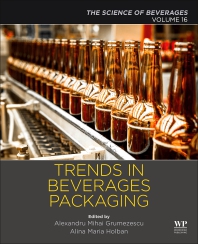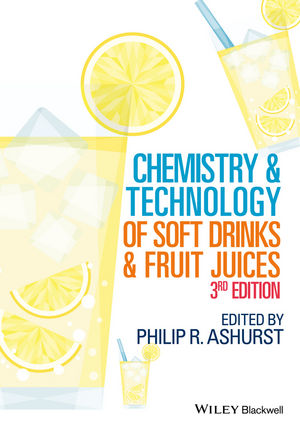
For beverage companies, packaging can oftentimes be the primary vehicle to deliver a brand’s message, especially for emerging beverage companies that have not yet solidified themselves in the minds of consumers. But for beverage innovators, the steps to develop a package for their product sometimes can be a daunting process that is full of unexpected turns.
To develop a beverage package, packaging consultants say they follow a step-by-step process that is malleable to the needs of individual companies. For example, some beverage companies have a fully formed direction for their product and can jump straight to generating ideas about packaging. However, others might have only an ingredient they plan to add to an existing beverage and need to develop a product position from scratch.
But the common thread in developing a beverage package is the need to have an established product position that identifies target consumers, competitors and the product’s point of difference on which packaging decisions can be made, packaging consultants say.
“It’s not going to sell itself,” says Ryan Lynch, managing partner at Beardwood & Co., New York. “You have to have something that is a hook beyond a pretty package and a nice kiwi-strawberry flavor.”
Doing homework
First, packaging consultants at Beardwood & Co. ask beverage companies to identify their goals, says Julia Beardwood, the company’s founder. The design firm begins by mining the beverage company for information about what it wants to accomplish with the package, including the brand’s promise and what needs to be conveyed about the beverage, she says.
“What we’re talking about with that company is goals,” Beardwood says. “What are their dreams? What are they trying to do?”
When a beverage company is vague on the details of its strategy, consulting companies will work with them to develop a brand strategy based on the product’s benefits, target audience and consumer research, among other factors, consultants say, because those factors will influence decisions about packaging as well.
“That’s why we start up front with understanding the business opportunity, the strategic imperative, who the brand is trying to capture,” says Eric Zeitoun, president of Dragon Rouge USA, New York. “That will drive everything else.”
Large beverage companies and emerging beverage entrepreneurs often are at opposite ends of the spectrum in developing a beverage, says Marcus Hewitt, chief creative officer at Dragon Rouge. Hewitt says that entrepreneurs typically have an ingredient they want to market, but do not have a target audience or research. However, large beverage companies will seek his company to help develop a product around a target demographic, he says.
Data about a brand’s position and goals is recorded in what CBX, New York, calls a “creative brief,” says Rick Barrack, CBX’s partner and chief creative officer. Depending on the capacity of the beverage company, CBX, like other packaging consulting companies, can help develop a research plan, he says.
“You’ve got to do the homework to ensure success down the road,” Barrack says.
Putting it together
Early in the process of developing a beverage package, beverage companies and packaging consultants will discuss packaging materials and whether the beverage company will use a stock container or develop a custom package, Beardwood says.
“The need to understand what’s out there from a material perspective and its effect on what ideas you provide is as essential as the idea itself,” CBX’s Barrack says.
Oftentimes price is a factor in those discussions, especially for beverage entrepreneurs. A custom container can cost between $20,000 and $40,000 versus lower prices for stock packages, she says. Similarly, some packaging materials cost more than others, and beverage companies must decide what works best for their products and their budgets.
“People in that position are generally not willing or able, quite frankly, to make that kind of investment up front, which is why you see with some brands’ custom structures evolving over time after they’ve gained some traction in the marketplace,” Beardwood & Co.’s Lynch says.
With a stock package, beverage companies can create signature details, such as embossing, to help differentiate itself on the shelf, Lynch says.
At this stage, beverage companies will be making decisions about structural components, shape, ergonomics and graphics as well, packaging consultants say. For example, a beverage company might need to make a decision about tamper-proofing technology and using easy-open caps, Barrack says. The beverage company then will go through a narrowing process, where it will decide which elements of the two-dimensional designs best characterize the brand, based on research done for the creative brief, he says.
Once the beverage company has settled on a two-dimensional design and materials, Beardwood recommends investing in a “comp,” a three-dimensional mockup of the final product so members of the beverage company can see what the finished product will look like.
With bottles, Beardwood says companies typically will create a foam mockup to illustrate shape, but the final comp would be made from Lucite and could cost from $3,000 to $10,000 for a custom package, deterring some smaller beverage companies.
With the comp, a beverage company can take its product to a store and place it on the shelf next to other beverages to see how it stacks up, she says. If the package isn’t right, refinements and adjustments can be made.
“It’s one thing to look at those on a 2-D piece of paper, it’s another thing to see them actually printed and applied with the right materials three-dimensionally,” Beardwood says.
Once a beverage company has settled on its final package, it must shift to package production before it can fill its bottles or cans and establish its product on the shelf.
Packaging consulting companies will work with the manufacturers chosen by beverage companies early on to ensure that the product is produced as quickly as possible. The packaging consultant will prepare designs and graphics for printing.
“In terms of efficiency, we speak to their manufacturer very early on, immediately after the first stage of design or even before,” Dragon Rouge’s Zeitoun says. “We don’t want to show designs that they can’t produce.” BI


